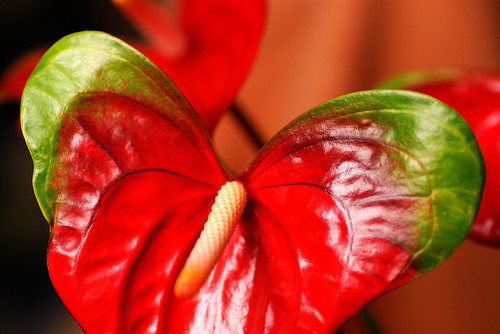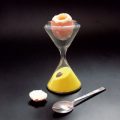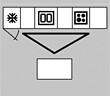 Anthurium flower Homeland a – tropicalforests of South America. The genus Anthurium has about 600 species. In indoor culture, beautifully flowering plants are widespread Anthurium Scherzer and Anthurium Andre, and as decorative foliage - Anthurium crystal. Small inconspicuous flowers of anthurium, collected in a spadix, are covered with a large leaf - perianth, which is painted in different colors. Especially luxurious flowers have Anthurium Andre - in height this species can reach more than 1 meter. Cut flowers of individual varieties are very effective in bouquets. Dutch breeders offer such exotic varieties as Acropolis (yellow-orange spadix, white spathe), Pistachio (pink-green spadix, green spathe), Shoko (white-green spadix, chocolate-colored spathe), and many others. Anthurium scherzeriana, in turn, is a species distinguished by its small stature. It is mainly grown as a houseplant. Currently, three groups of hybrids have been bred: tall (up to 60 cm), medium-sized (30-45 cm) and miniature (5-10 cm).
Anthurium flower Homeland a – tropicalforests of South America. The genus Anthurium has about 600 species. In indoor culture, beautifully flowering plants are widespread Anthurium Scherzer and Anthurium Andre, and as decorative foliage - Anthurium crystal. Small inconspicuous flowers of anthurium, collected in a spadix, are covered with a large leaf - perianth, which is painted in different colors. Especially luxurious flowers have Anthurium Andre - in height this species can reach more than 1 meter. Cut flowers of individual varieties are very effective in bouquets. Dutch breeders offer such exotic varieties as Acropolis (yellow-orange spadix, white spathe), Pistachio (pink-green spadix, green spathe), Shoko (white-green spadix, chocolate-colored spathe), and many others. Anthurium scherzeriana, in turn, is a species distinguished by its small stature. It is mainly grown as a houseplant. Currently, three groups of hybrids have been bred: tall (up to 60 cm), medium-sized (30-45 cm) and miniature (5-10 cm). Tall ones are distinguished by a large numbersmall inflorescences with an oval-shaped cover - these are the varieties Lady Jane, Renata. Medium-sized - with an inflorescence in the form of a curved cob and a cover in the form of a heart, bent down. Miniature varieties are distinguished by very early flowering. All anthuriums, as tropical plants, are thermophilic and do not tolerate cold and drafts. They prefer a bright, but not sunny place and high air humidity. In a dry room, these plants are sprayed. Anthurium leaves must be kept clean. Water the plants little by little, preventing the soil from drying out. Once every two weeks, add complex fertilizer to the irrigation water. In winter, anthuriums are fed more often - once a week. Poor drainage, too heavy soil and overwatering can cause root rot. Young anthurium plants are replanted annually in early spring. A thick layer of pot shards or expanded clay is placed on the bottom of the pot, a substrate of peat fibrous soil and chopped moss is poured, the pH value must be slightly acidic, from 5 to 6. Anthurium has very brittle fleshy roots, so when replanting it, you need to handle it with care. It is very useful to pour a layer of fine expanded clay on top of the substrate.
Tall ones are distinguished by a large numbersmall inflorescences with an oval-shaped cover - these are the varieties Lady Jane, Renata. Medium-sized - with an inflorescence in the form of a curved cob and a cover in the form of a heart, bent down. Miniature varieties are distinguished by very early flowering. All anthuriums, as tropical plants, are thermophilic and do not tolerate cold and drafts. They prefer a bright, but not sunny place and high air humidity. In a dry room, these plants are sprayed. Anthurium leaves must be kept clean. Water the plants little by little, preventing the soil from drying out. Once every two weeks, add complex fertilizer to the irrigation water. In winter, anthuriums are fed more often - once a week. Poor drainage, too heavy soil and overwatering can cause root rot. Young anthurium plants are replanted annually in early spring. A thick layer of pot shards or expanded clay is placed on the bottom of the pot, a substrate of peat fibrous soil and chopped moss is poured, the pH value must be slightly acidic, from 5 to 6. Anthurium has very brittle fleshy roots, so when replanting it, you need to handle it with care. It is very useful to pour a layer of fine expanded clay on top of the substrate.

Making Money with Desserts: Success Stories
Evgeniya Polischuk (Fedutinova) instagram:@evgeniyafedutinovavk.com/janeshomebaking– It all started with baking for family and friends. Gradually, I started posting photos of my baked goods on Instagram – and orders started coming in. I made my first custom-made cake on October 13, 2014, and a little earlier I started making macaroons and cupcakes. You could say that the business “found me”, I am very […]

Soups are cold recipes with photos
Cold cucumber soup with yogurt and lemonsorbet from the chef of the restaurant La Taverna Alexander Zhurkin Photo: Getty Images Ingredients: Plain yoghurt – 125 g Cucumber – 150 g Lemon/lime sorbet – 50 g Cocktail shrimp – 24 g Fresh ginger juice – 1 g Lime juice – 5 g Fresh orange juice – 5 g Parsley – 1 g Pink pepper – 1 g Watercress – […]

barbeque kebab
Pork tenderloin in glaze Photo:Dmitry Bayrak/dbstudioPreparation time: 20 minutes + marinating time.Calories: 454 kcal per serving.For 4 servings: 4 pork tenderloins (approximately 300 g each), 1 onion, 2 cloves of garlic, 1 tsp. lemon zest, 1 tsp. lemon juice, a pinch of ground cumin, coriander and turmeric, 1 tbsp. vegetable […]

Pierre Duacan: dietary recipes: Ducane diet
Beetroot soup Photo:Season’S, Luxury Hotels RepresentationYou will need:· Boiled beetroot – 60 g· Fresh cucumbers – 20 g· Red radish – 20 g· Green onions – 10 g· Egg – 1 pc.· Drinking mineral water – 200 g· Salt – 1 gPreparation:· Boil the egg and beetroot.· Grate the cucumbers, radish and part of the beetroot. Put everything […]





